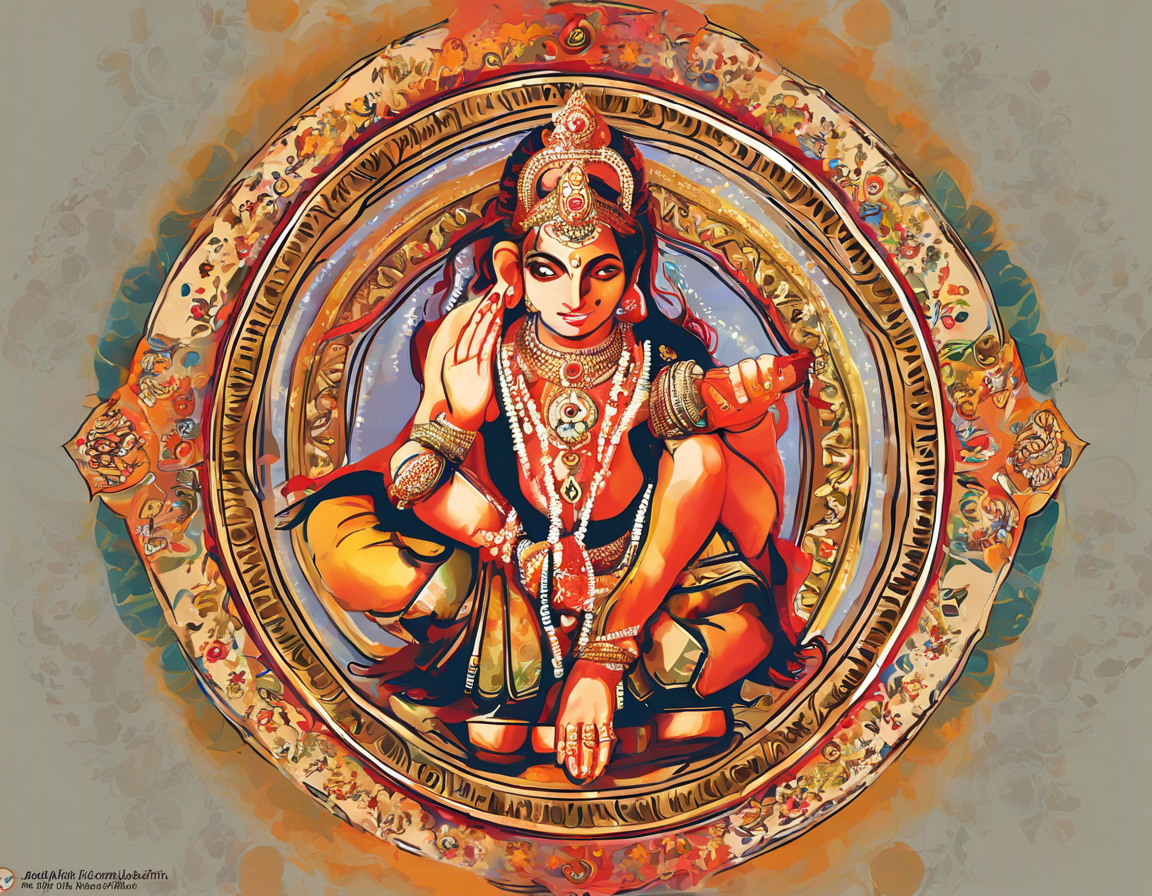Introduction:
Aarti Kunj Bihari Ki is a popular devotional prayer sung in praise of Lord Krishna. The Aarti is a form of worship that usually takes place in Hindu temples or homes during religious ceremonies or daily rituals. The lyrics of this Aarti express deep devotion and reverence towards Lord Krishna, highlighting his divine qualities and asking for his blessings and protection. In this blog post, we will delve into the significance of Aarti Kunj Bihari Ki, its history, symbolism, and the spiritual meanings behind the verses.
History and Significance:
The Aarti Kunj Bihari Ki traces its origins back to the tradition of Aarti in Hinduism, where devotees offer prayers, light lamps, and sing songs to invoke the presence of the deity. The term “Aarti” is derived from the Sanskrit word “Aratrika,” which means the removal of darkness. Performing Aarti is believed to dispel darkness (ignorance) and usher in the light of knowledge and wisdom.
Aarti Kunj Bihari Ki specifically focuses on Lord Krishna, one of the most revered deities in Hinduism. Lord Krishna is considered the eighth avatar of Lord Vishnu and is worshipped as a supreme being who embodies love, compassion, and divine playfulness. The Aarti praises Lord Krishna’s virtues, beauty, and exploits, touching the hearts of devotees and deepening their connection with the divine.
Symbolism and Interpretation:
Each verse of Aarti Kunj Bihari Ki is rich in symbolism and carries profound spiritual messages for the devotees. Let’s explore some key themes and interpretations of the Aarti:
-
Kunj Bihari: The term “Kunj Bihari” refers to Lord Krishna, who enjoys playful pastimes in the groves of Vrindavan. It symbolizes Krishna’s intimate relationship with nature and his devotees, portraying him as a loving and accessible deity.
-
Gagan Sadrisham: Describing Lord Krishna as radiant as a cloud, this verse highlights his divine beauty and aura. It signifies Krishna’s transcendental nature and his ability to captivate hearts with his charm.
-
Megh-Adhiram: Comparing Krishna to a dark raincloud, this metaphor symbolizes his deep, mysterious nature and his role as the harbinger of blessings and prosperity. It signifies Krishna’s ability to nourish and sustain life.
-
Murali Manohar: Referring to Krishna as the enchanting flute player, this verse underscores his ability to mesmerize all beings with his melodious music. It symbolizes Krishna’s call to the souls, drawing them towards the path of spirituality and devotion.
-
Yashoda-Nandan: Portraying Krishna as the beloved son of Mother Yashoda, this verse emphasizes his playful and endearing childhood exploits. It symbolizes the bond of love between the devotee and the divine, mirroring the parental affection of Mother Yashoda towards Krishna.
Spiritual Meanings and Lessons:
Apart from its poetic beauty and musical appeal, Aarti Kunj Bihari Ki imparts valuable spiritual teachings and life lessons to the devotees. Some of the spiritual meanings conveyed through the Aarti include:
-
Devotional Love: The Aarti encourages devotees to develop a deep sense of devotional love towards the divine, mirroring the unconditional love between Radha and Krishna. It teaches the importance of surrendering to the divine will and finding fulfillment in spiritual union.
-
Simplicity and Innocence: Through the imagery of Krishna’s childhood antics and playful nature, the Aarti highlights the virtues of simplicity, innocence, and purity of heart. It reminds devotees to embrace childlike qualities of trust, joy, and spontaneity in their spiritual journey.
-
Divine Protection: By invoking Krishna’s blessings and protection, the Aarti instills a sense of security and faith in the devotees. It teaches them to rely on the divine grace in times of need and to cultivate trust in Krishna’s guidance.
-
Joyful Surrender: The Aarti reflects the joy of surrendering to the divine will and finding bliss in serving the Lord selflessly. It emphasizes the path of Bhakti (devotion) as a means to attain spiritual liberation and inner peace.
-
Unity in Diversity: Through the universal appeal of Lord Krishna’s persona, the Aarti promotes the message of unity in diversity and harmony among all beings. It transcends barriers of caste, creed, and nationality, uniting people in the common bond of love for the divine.
FAQs (Frequently Asked Questions):
-
What is the significance of Aarti in Hindu worship?
Aarti is a form of worship that involves offering prayers, light, and devotional songs to a deity. It symbolizes the removal of darkness (ignorance) and the invocation of divine blessings. -
Who is Lord Krishna, and why is he worshipped?
Lord Krishna is considered the eighth avatar of Lord Vishnu in Hinduism. He is worshipped for his divine qualities, teachings in the Bhagavad Gita, and his role as a protector and provider of devotees. -
What does the term “Kunj Bihari” signify in Aarti Kunj Bihari Ki?
Kunj Bihari refers to Lord Krishna, portraying him as the playful deity who enjoys pastimes in the groves of Vrindavan. It signifies Krishna’s intimate relationship with nature and devotees. -
How does Aarti Kunj Bihari Ki convey spiritual meanings to devotees?
The Aarti uses rich symbolism, metaphors, and poetic verses to convey spiritual teachings on devotion, love, surrender, and divine grace. It evokes deep emotions and fosters a sense of connection with the divine. -
What lessons can one learn from the Aarti Kunj Bihari Ki?
The Aarti teaches devotees to cultivate devotional love, simplicity, innocence, and trust in the divine. It emphasizes the joy of surrender, divine protection, and the unity of all beings in the love of Lord Krishna.
